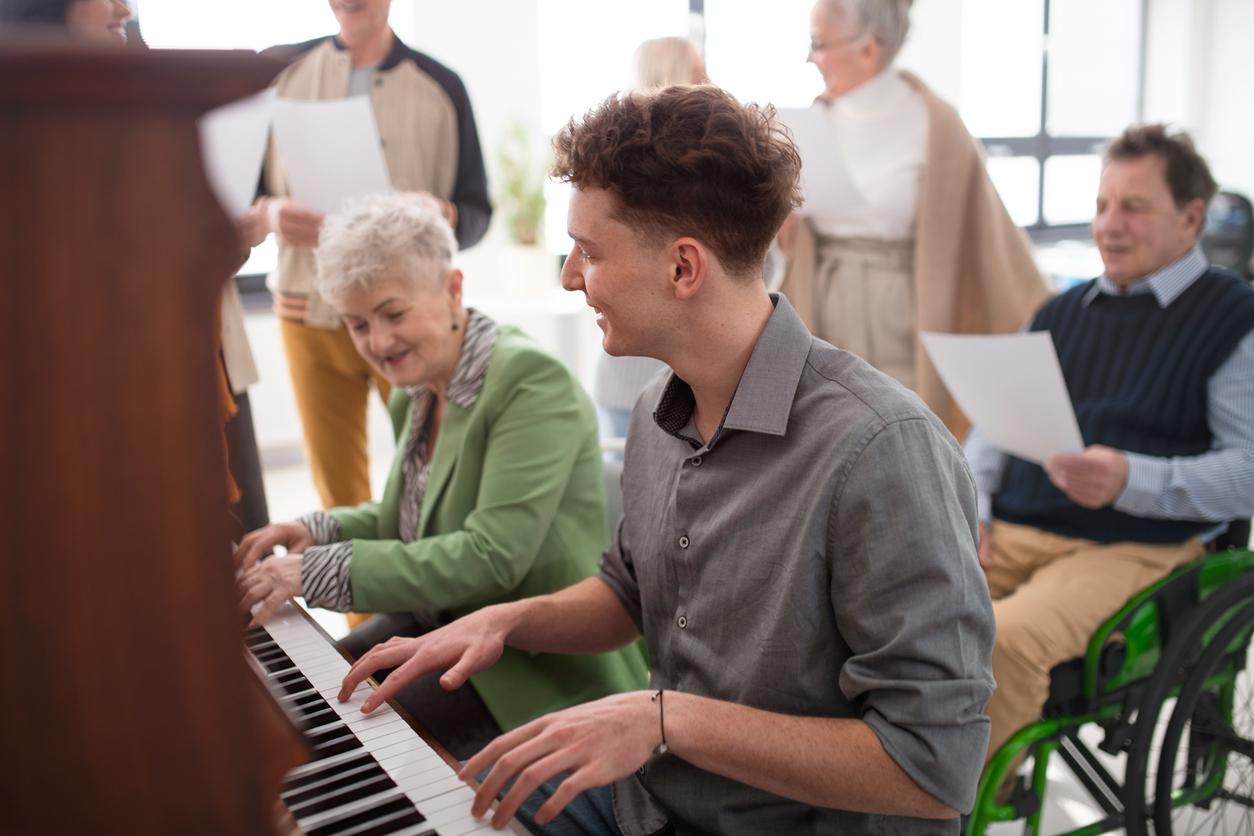People with fibromyalgia are in low spirits. Affected by several diseases, victims of delayed diagnosis, they also face major psychological suffering.

Pain, fatigue, sleep disorders… The list of symptoms is long and crippling for people who suffer from fibromyalgia. This diffuse pain syndrome affects more than 3 million French people. But it is still the target of many misconceptions. In order to better know the patients, the FibromyalgieSOS association carried out investigation with 4,500 people in 2014. Why actor details the main results with its vice-president, Ghyslaine Baron.
Who are fibromyalgia sufferers?
In the vast majority of cases, fibromyalgia affects women. Only 7% of patients are male, although a growing number of them are being diagnosed. On average, survey participants were 48 years old and had been diagnosed 5 years ago. For the most part, they were in a relationship and had a job (60%). But 2 out of 10 people are on sick leave and 4% of respondents benefit from part-time therapy.
Proof of the handicap caused by fibromyalgia, 4 out of 10 patients have submitted a long-term affection request (ALD), which entitles them to 100% health care coverage by Health Insurance.
Hyperactivity is not uncommon in this population since one in two fibromyalgia sufferers is affected. The survey also notes the over-representation of overweight and obese people compared to the general population.
According to respondents, their illness is due to several triggers. For 72% of them, psychology comes into play. “Stress is a big trigger for fibromyalgia,” confirms Ghyslaine Baron. We noticed that in professional circles where there have been a lot of suicides, many people have developed fibromyalgia. ”
55% still add a physical factor, such as an illness or an accident. 14% even cite an external element, including vaccination.
What is their state of health?
Rather bad. On average, women cite 5.6 health problems in addition to their fibromyalgia. Hypothyroidism and spasmophilia figure prominently. In men, 4.8 more pathologies are declared, sleep apnea being the majority. “There are primary and secondary forms,” explains Ghyslaine Baron. In many cases, the first symptoms appear after the diagnosis of another pathology.
Ghyslaine Baron, vice-president of FibromyalgieSOS: “ It’s like having a big flu at any time of the year, accompanied by abnormal fatigue. “
Depression is a good co-morbid condition, although it appeared before the diffuse pain syndrome in half of the cases. Which promotes confusion. “When you are tired every day and suffer from chronic pain, some doctors think of depression at the start, admits Ghyslaine Baron. But by dint of suffering, we can also become depressed. “
Psychic suffering is real for these patients: 40% of respondents say they have suicidal thoughts. And 71% say they have a feeling of injustice that they attribute to their pathology.
There again, for Ghyslaine Baron, no surprise: “There is a misunderstanding of the family and socio-professional environment, she laments. When you have a skiing accident, your leg in a cast shows up. Our symptoms are not visible and the medical tests are correct. We are then explained that we may be an imaginary patient. A label with devastating consequences.
In fact, fibromyalgia affects morale, professional life, leisure time, travel… But for Ghyslaine Baron, the watchword must be to learn to live with this diffuse pain syndrome.
Ghyslaine Baron : ” I systematically use the image of diabetics and asthmatics, who manage to live. If we stay in bed when we are in pain, the day we get up we will be less well. “

How is the diagnosis made?
On average, it takes 6.4 years from symptom onset to diagnosis. It takes 3.2 more years before access to appropriate care, even if the situation improves. This wandering “destroys the patient”, according to Ghyslaine Baron who underlines the additional cost that this causes for health insurance. “As soon as we have good care, we can learn to manage our fibromyalgia,” she emphasizes. The problem is that 90% of fibromyalgia sufferers have had difficulty in having their syndrome accepted by their relatives and their doctor.
Ghyslaine : ” In 10 years, wandering is still less important than before. People are often diagnosed within a year. “
It is most often the rheumatologist who makes the diagnosis, followed by the general practitioner. People over 70 still tend to give in to the sirens of self-diagnosis, reveals the survey.
How are they treated?
People with fibromyalgia turn massively to the physiotherapist to relieve their symptoms, as well as to the osteopath. Mental health professionals are regularly called upon, in addition to the usual rheumatologists and general practitioners. The management methods are fairly standard: 76% of people take medication regularly, with analgesics in mind. But as Ghyslaine Baron reminds us, antidepressants and antiepileptics can be invaluable in managing pain.
Ghyslaine Baron : ” It is necessary to accept the antidepressants proposed by the doctors, given in low dose to cut the information of the pain, and to follow the recommendations of the High Authority of Health. “
Other less conventional approaches are also recommended, such as spa treatment, requested by a quarter of fibromyalgia sufferers. These patients also understood the benefit of maintaining regular physical activity. 58% are engaged in brisk walking and 23% in gardening.
.















